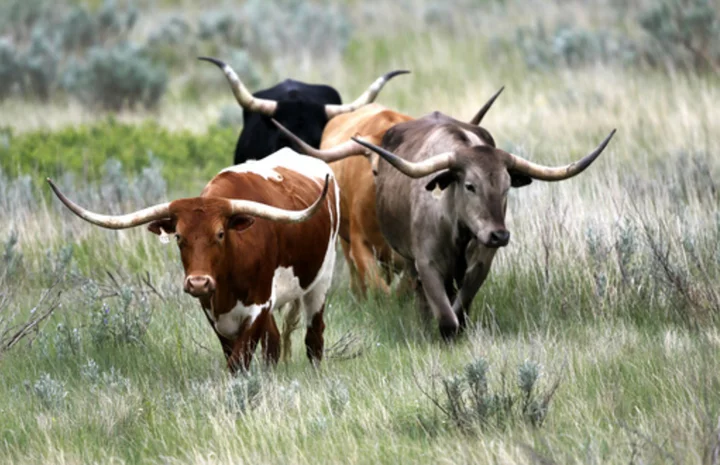A new case of cattle anthrax has been confirmed in southwest North Dakota's Grant County, bringing the number of cases in the state to 25 this year, according to state agriculture officials.
It’s the first case reported in the state since August, all in Grant County and neighboring Hettinger and Adams counties. Those cases have led to about 170 cattle deaths, the North Dakota Department of Agriculture said in a news release Thursday.
While it's unusual to see a case so late in the year, Agriculture Commissioner Doug Goehring said, the area has seen unusually mild weather recently that has allowed cattle to remain on pastureland where anthrax thrives.
The year’s South Dakota outbreak is the worst since 2005. From 2006 through last year, 18 cases of cattle anthrax were confirmed. Outbreaks in the U.S. are rare, as a vaccine for livestock is cheap and easily administered.
“Many producers in the affected area worked with veterinarians to administer vaccinations earlier this year,” North Dakota State Veterinarian Dr. Ethan Andress said.
The disease is not contagious. It's caused by bacterial spores that can lie dormant in the ground for decades and become active under ideal conditions, such as drought. In 2005, 109 anthrax cases led to more than 500 confirmed animal deaths, with total livestock losses estimated at more than 1,000.
Naturally occurring anthrax poses little danger to humans. Typically in the U.S., infection comes from handling carcasses or fluids from affected livestock without protective clothing, which transfer the spores and result in an easily treatable skin infection, according to the federal Centers for Disease Control and Prevention.
The most danger to humans comes from breathing in spores, which is nearly always fatal if left untreated. But this is extremely rare, even for people who work with livestock, according to the CDC.
Most people associate anthrax with the weaponized version used in 2001 attacks, when five people died and 17 others were sickened from letters containing anthrax spores sent through the mail.









